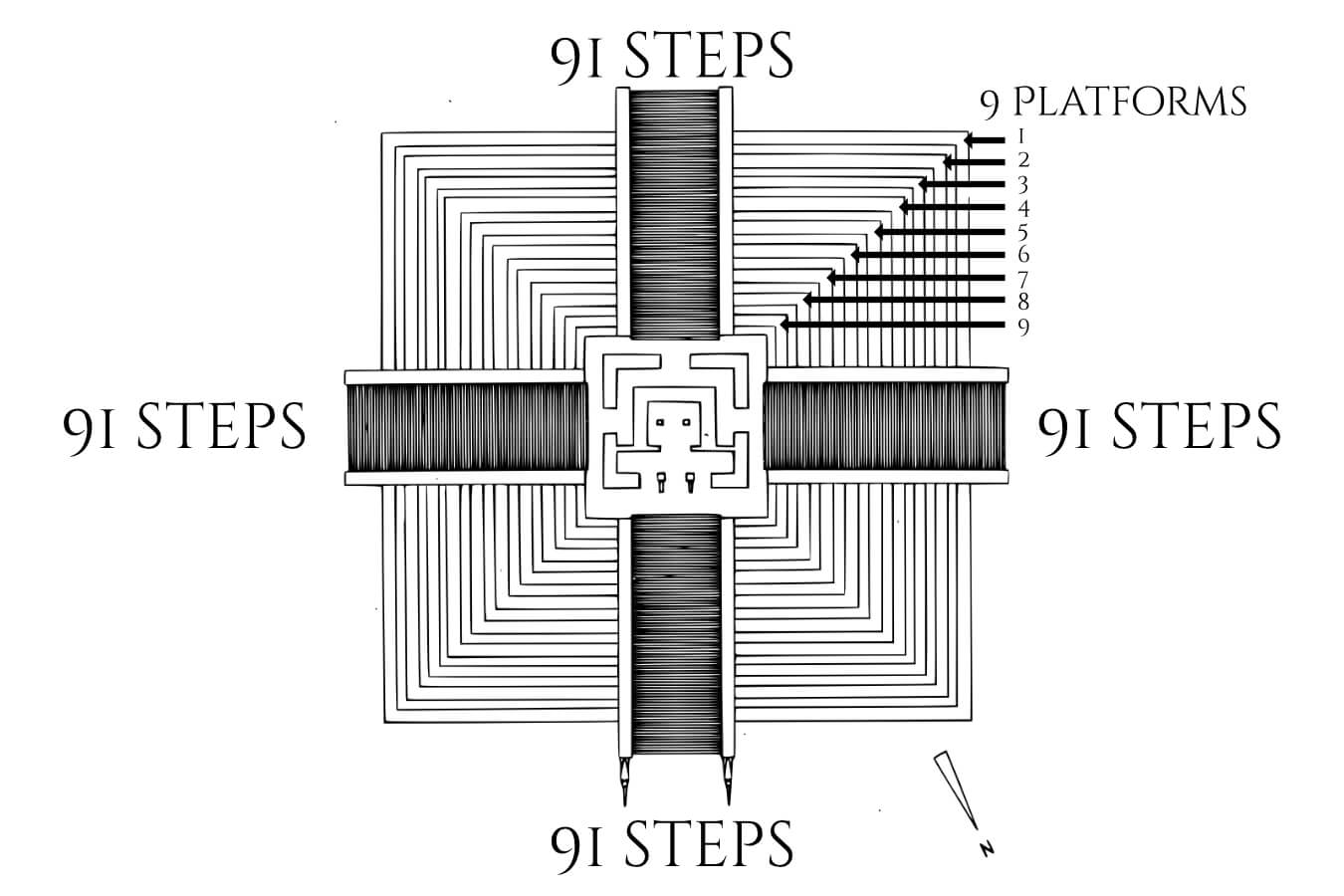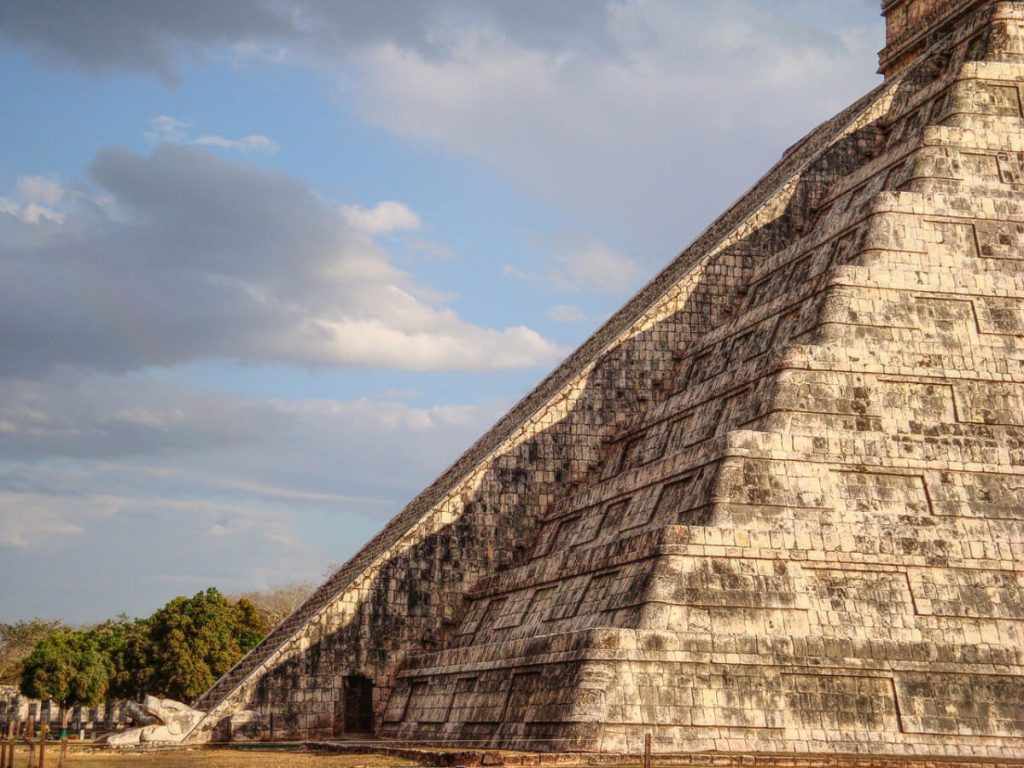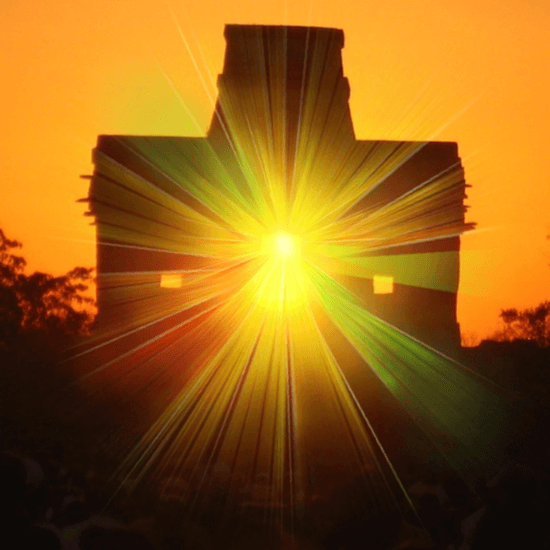The Chichen Itza Equinox and the Serpent effect that the sun provides in certain days and hours of the year is one of the main attractions to this Mayan Archeological Site. In this effect, that brings together more than twenty-five thousand people each year, you can see the
The Kukulkan Pyramid design
The design of this pyramid was made by the Mayan architects who so well mastered the knowledge of the stars, the planets, and the sun.

By placing the Pyramid of Kukulkan in a certain angle taking in account the distance between the platforms’ angles related to the staircase, this creates the shape to the body of one of their main deities, Kukulkan, the feathered serpent whose head is sculpted at the foot of the Pyramid’s staircase.
The Toltecs influence
When the Toltec warriors of Tula arrived in the Mayan Peninsula, they found the Itzaes, a very cultured people but little prepared for war, so they occupied their city without much resistance. Soon, the Toltec’s main god Quetzalcoatl was adopted by the Mayans, who called him Kukulcan.
To increase their power, they gathered people from all over the Mayan Peninsula in the esplanade on the days of the equinox and told them that their god Kukulcan, the feathered serpent would come down to the earth at a certain time and would speak through them.
When the inhabitants of Yucatan saw the serpent descend the steps of the Pyramid of Kukulkan, they would undoubtedly be fascinated by the optical effect by the Chichen Itza Equinox, which would probably be surrounded by great effects, given the great acoustics of the place.
The descent of the serpent in the Chichen Itza Equinox
An Equinox is when the day has the same duration as the night, a phenomenon that occurs two days a year, on March 21st and September 21st, many ancient civilizations including other Mayan cities like Dzibilchaltun have events related to these dates, but in my opinion, none of them as original and amazing as this one.
Descending Kukulkan Serpent effect
The effect lasts a few minutes and is made when the sun casts the shadow onto the stairway created by the 9 platforms resembling the body of the serpent that moves as the sun travels across the sky.
The Chichen Itza Equinox effect begins with no shadow and as time passes by, the triangles created by the platforms start to move along the staircase until it’s completely covered up by shadow. After this effect, the serpent’s head is the only part of the staircase with sunlight, only to be also covered up as the sun continues his path.
How to enjoy the descent of the Serpent in Chichen Itza
On the days of the Chichen Itza Equinox and also two or three days before and two or three days after, at approximately 4:30 in the afternoon when the sun begins to descend, it casts its rays over the Castle of Kukulcán. This makes the 9 platforms create a shadow in the form of triangles on the steps of the staircase.
You can start to see the effect at 3:45 pm but it’s a slow journey for Kukulkan. At approximately 4:30 pm is when you can see the body of the serpent perfectly formed by the triangles. After that, you can see how the shadow covers the staircase and the head of the serpent.
The best time to see the descent of Kukulkan
The phenomenon of the descent of the feathered serpent at Chichen Itza can be seen on both equinoxes. My advice is that you don’t go on the 21st because the amount of people is tremendous and can be very uncomfortable. If you still want to go on this day, there is enough space for everyone, but of course, very crowded.
You can also enjoy the phenomenon a couple of days before and a couple of days later, when you can still see the same effect and without huge crowds of tourists.
The experience of visiting on the Equinox
Check out this video from adventurous Adam about the experience he had on his trip to Chichen Itza on the Equinox.




















